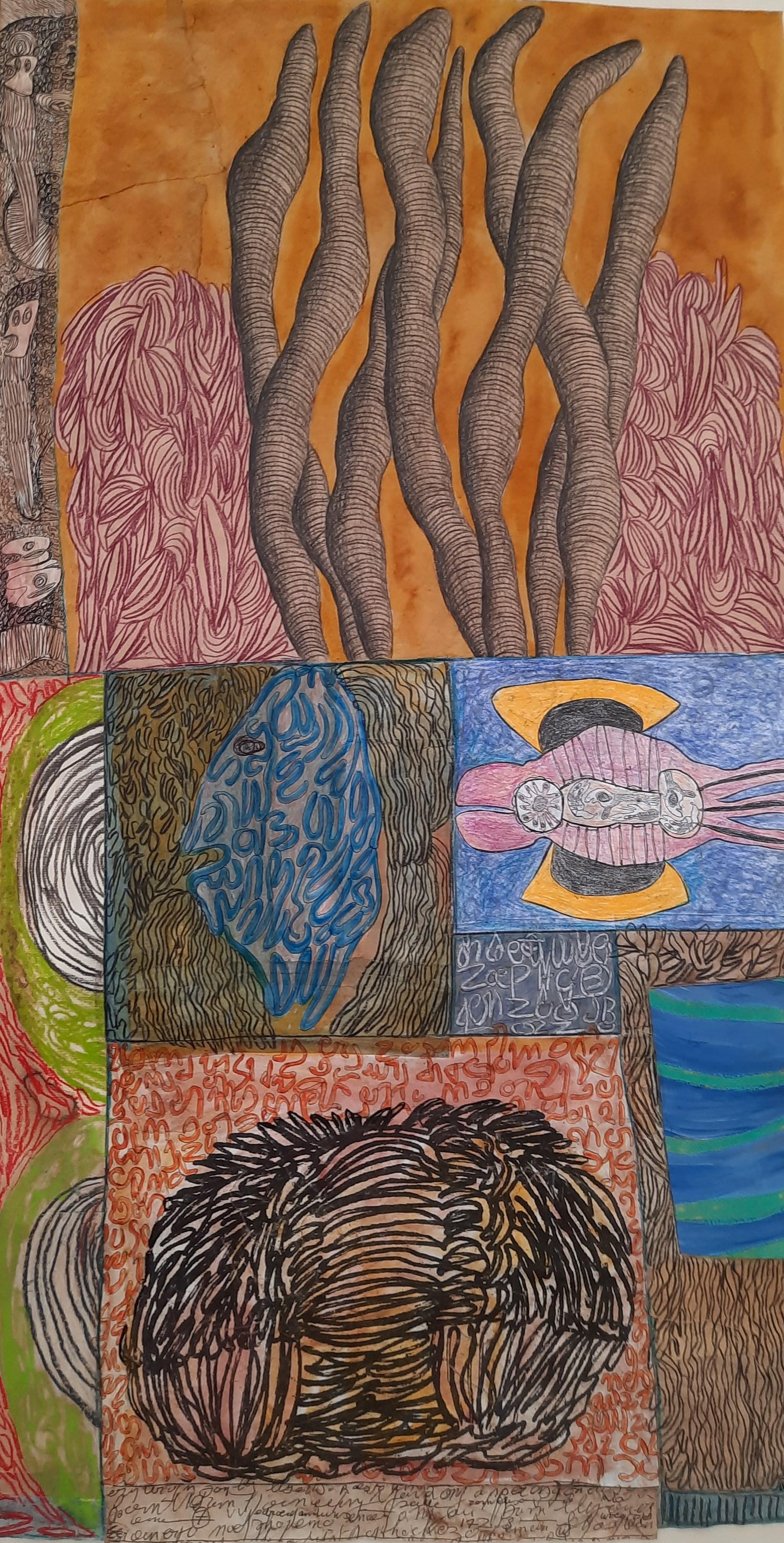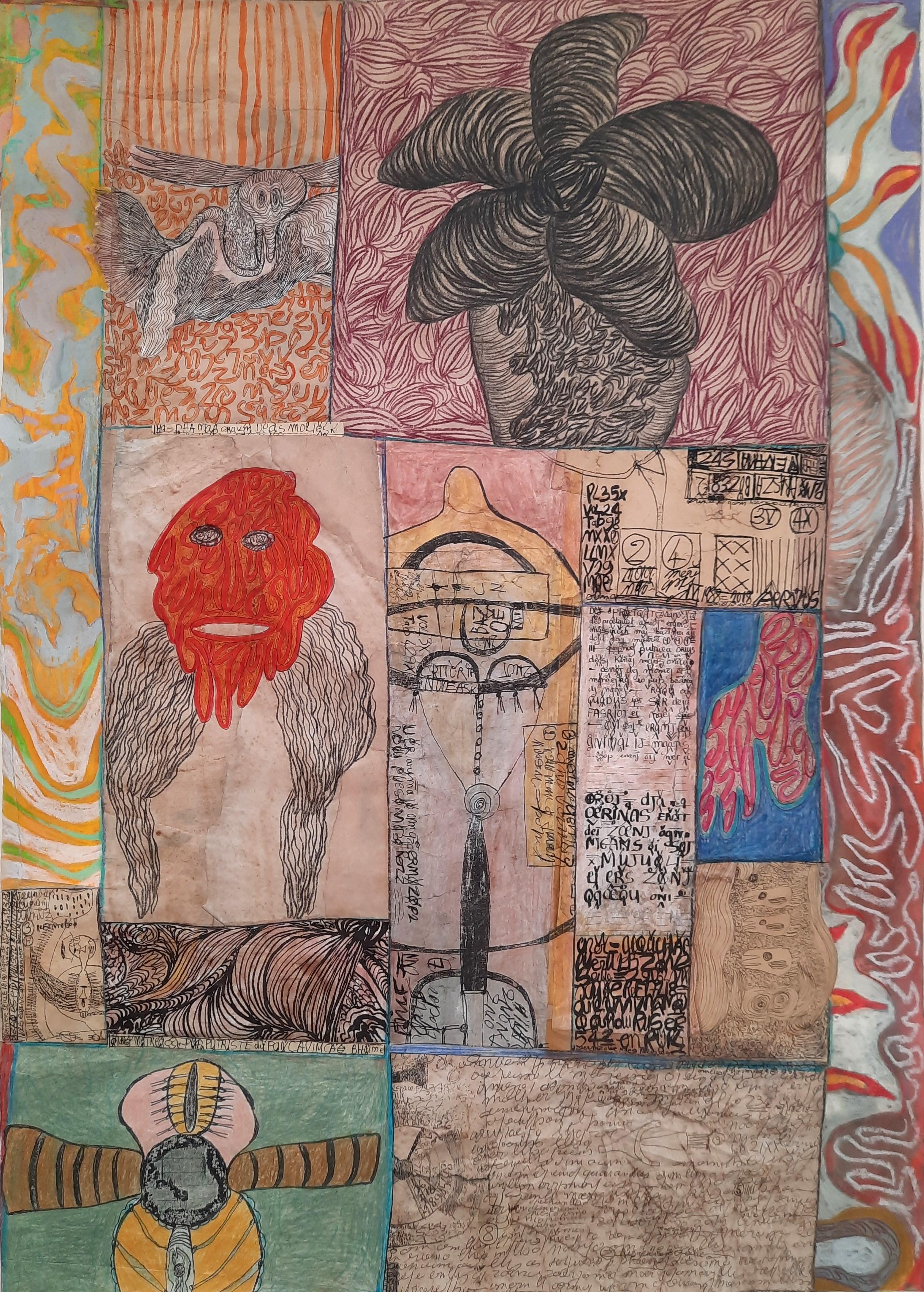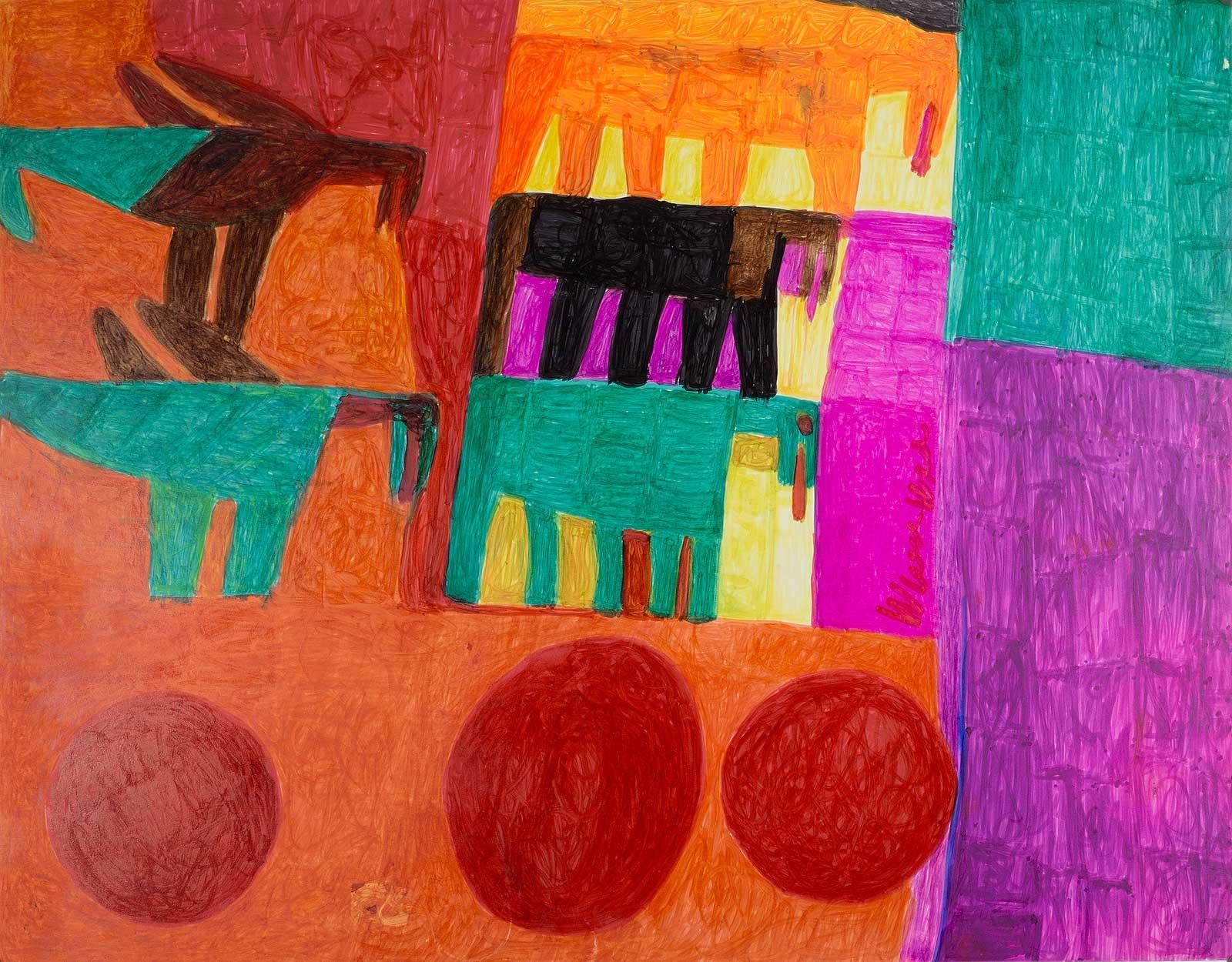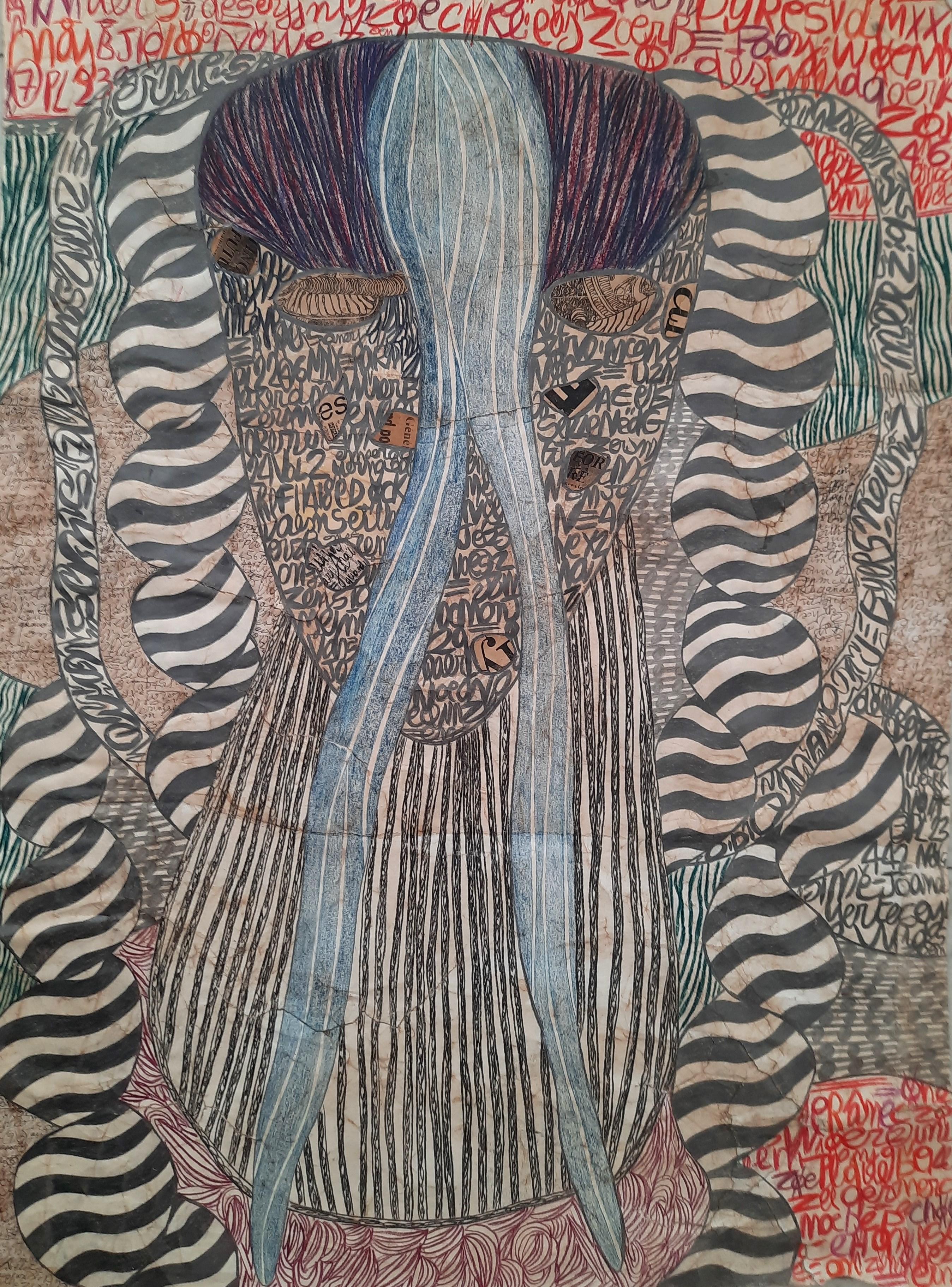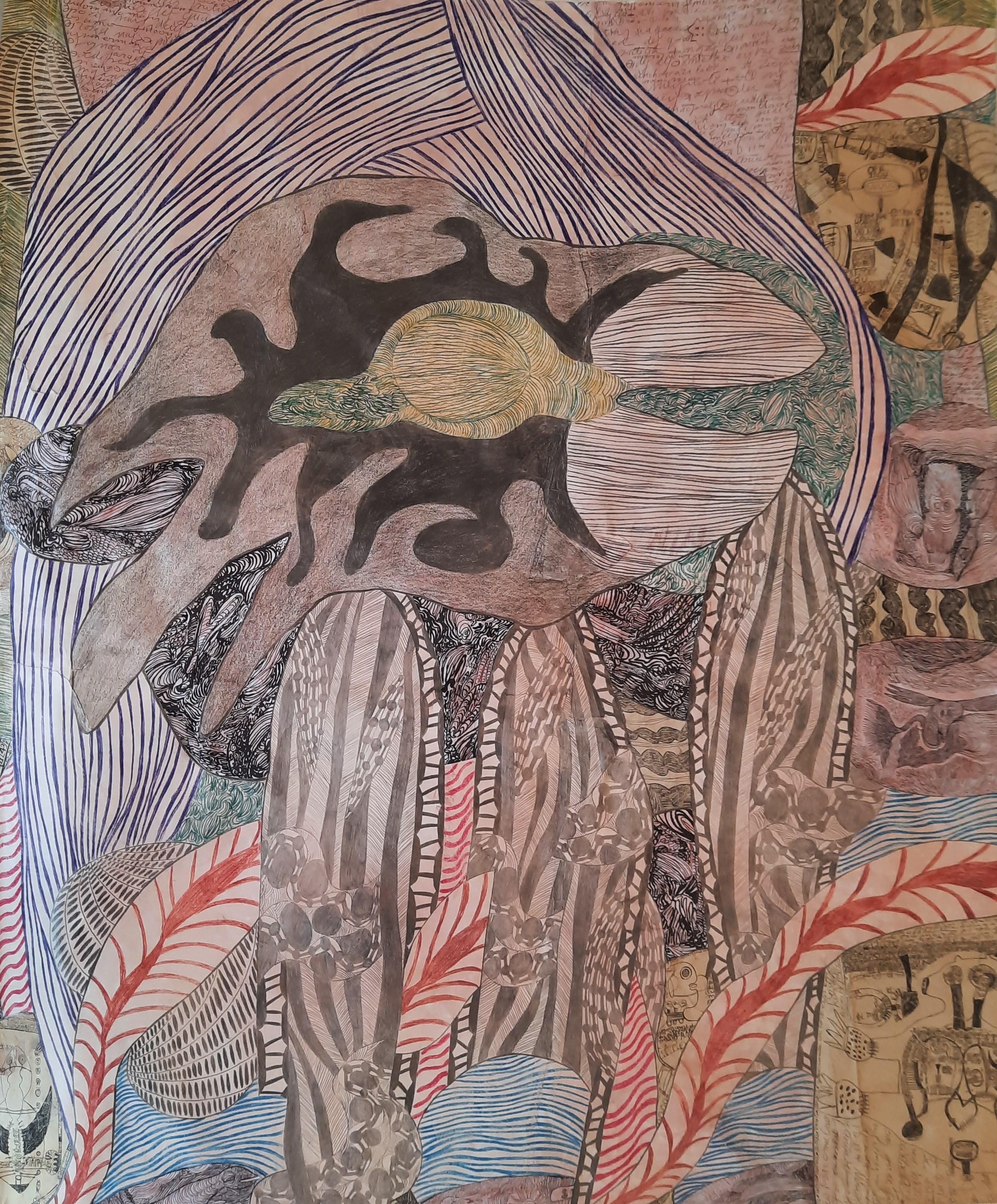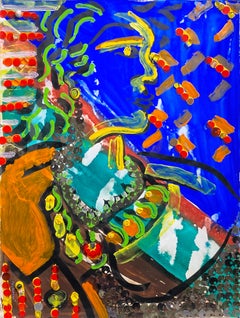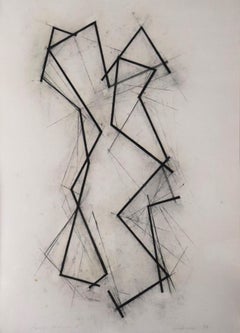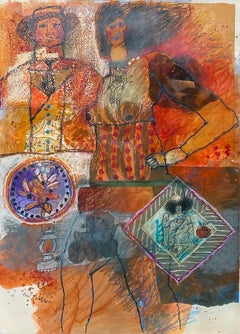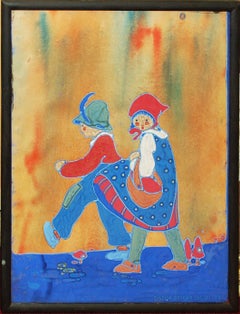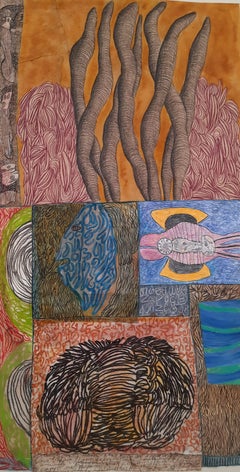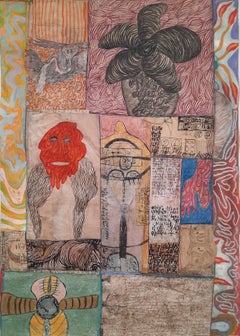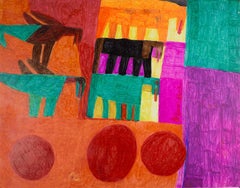Items Similar to A Beautiful Day
Video Loading
Want more images or videos?
Request additional images or videos from the seller
1 of 11
Nellie Mae RoweA Beautiful Day1978
1978
Price Upon Request
Price Upon Request
Price Upon Request
Price Upon Request
Price Upon Request
Price Upon Request
Price Upon Request
Price Upon Request
Price Upon Request
Price Upon Request
Shipping
Retrieving quote...The 1stDibs Promise:
Authenticity Guarantee,
Money-Back Guarantee,
24-Hour Cancellation
About the Item
A Beautiful Day, 1978
by Nellie Mae Rowe (American, 1900-1982)
Unframed: 9" x 12"
Framed: 11.25" x 14.25"
Signed and Dated Lower Left
Nellie Mae Rowe is a preeminent figure of twentieth-century American art.
Through the traveling retrospective exhibition Really Free: The Radical Art of Nellie Mae Rowe, currently at the Brooklyn Museum of Art, her practice has been re-contextualized as a radical act of self-expression and liberation for a Black woman artist living and working in the American South.
The Really Free features more than one hundred works exploring themes of girlhood, play, and spirituality. Autobiographical drawings, experimental sculpture, and renderings of Rowe’s “Playhouse”—an environment the artist built and lived in for decades—capture her assertion of independence and accessible means of art production. During the last fifteen years of her life, Rowe was fueled by a desire to reclaim a creative vision that emerged during her childhood and achieve self-liberation within the complex cultural climate of the post–civil rights era South.
Born in Fayette County, Georgia, at the turn of the twentieth century, Rowe discovered her passion for art-making early on, producing drawings and cloth dolls as a child. However, the demands of her family farm, an early marriage, and decades of employment as a domestic laborer made it difficult for Rowe to create for many decades. After the deaths of her second husband and her longtime employers in the 1960s, Rowe wholeheartedly returned to her art, devoting the rest of her life to realizing her creative calling. Her dedication resulted in a practice that was immersive, idiosyncratic, and joyous.
Born on the 4th of July in 1900, self-taught artist Nellie Mae Rowe was the ninth of ten children of Sam and Luella (Swanson) Williams. The family lived on a rented farm in Fayette County, Georgia, a rural community twenty miles south of Atlanta. Sam, born a slave, used his expertise as a blacksmith and basketweaver to augment the family income. Luella was a talented seamstress and quilter, skills she taught to her daughter. The family worshiped at Flat Rock African Methodist Episcopal Church, the oldest active congregation in the area.
The church housed an elementary school that Nellie Mae attended for several years. She married Ben Wheat in 1916, and the childless couple moved to Vinings, a rural community northwest of Atlanta, fourteen years later. Ben died in 1936, and later that year Nellie Mae married Henry "Buddy" Rowe, a much older widower. In 1939, the couple built their home on the main street of Vinings, where they spent the rest of their lives. In addition to working as a domestic, Nellie Mae spent her time transforming that house, which became a local landmark, into a fanciful environment.
Buddy Rowe died in 1948, and Nellie Mae increased her artistic output. She called her home her "playhouse" and exuberantly embellished it inside and outside with colorful drawings, stuffed dolls, sculptures, Christmas ornaments, plastic flowers, and recycled objects. Her unusually decorated swept yard attracted positive and negative attention. Nellie Mae welcomed curious visitors to tour her home, sign a guestbook, and listen to her sing gospel songs. Among her visitors were artists and collectors who succeeded in bringing her work to a larger audience. Nellie Mae achieved national recognition as an artist in the last decade of her life, which coincided with her most prolific period artistically.
The first exhibition in which Nellie Mae's work was included was Missing Pieces: Georgia Folk Art 1770-1976 at the Atlanta History Center. Atlanta art dealer Judith Alexander befriended Nellie Mae and staged her first solo exhibition in November 1978. The following year, Rowe took her first trip outside of Georgia to view her work at Parsons/Dreyfuss Gallery in New York City. In 1981 she was diagnosed with multiple myeloma and succumbed to it on October 18, 1982. She is buried in the cemetery at Flat Rock African Methodist Episcopal Church.
A devoutly religious woman, Nellie Mae attributed her talent to God, but her subject matter reflects her personal vision and contemporary events and often includes symbolic elements that are Christian, African, and Afro-Caribbean. Her distinctive style illustrates her sense of color and form, which is devoid of adherence to perspective or scale. Nellie Mae preferred to use humble materials—crayons, pencils, cardboard, recycled food containers, used chewing gum, and scraps of fabrics.
She delighted in embellishing her work with trinkets, marbles, plastic flowers, and toys. Her unique view of life, with her insertion of text and tracings of her hands and feet, is the legacy that this self-taught artist left behind. Her work is included in the collections of the Morris Museum of Art, High Museum of Art, Ogden Museum of Southern Art, Museum of Contemporary Art of Georgia, Tubman African-American Museum, Smithsonian American Art Museum, American Folk Art Museum, and the Library of Congress American Folklife Center.
Karen Towers Klacsmann
Adjunct Assistant Curator/Research
Morris Museum of Art
Augusta, Georgia
About the Seller
5.0
Vetted Professional Seller
Every seller passes strict standards for authenticity and reliability
Established in 1970
1stDibs seller since 2017
155 sales on 1stDibs
Typical response time: 1 to 2 days
- ShippingRetrieving quote...Shipping from: Missouri, MO
- Return Policy
Authenticity Guarantee
In the unlikely event there’s an issue with an item’s authenticity, contact us within 1 year for a full refund. DetailsMoney-Back Guarantee
If your item is not as described, is damaged in transit, or does not arrive, contact us within 7 days for a full refund. Details24-Hour Cancellation
You have a 24-hour grace period in which to reconsider your purchase, with no questions asked.Vetted Professional Sellers
Our world-class sellers must adhere to strict standards for service and quality, maintaining the integrity of our listings.Price-Match Guarantee
If you find that a seller listed the same item for a lower price elsewhere, we’ll match it.Trusted Global Delivery
Our best-in-class carrier network provides specialized shipping options worldwide, including custom delivery.More From This Seller
View AllAlphonsine
By Robert Kushner
Located in Missouri, MO
Robert Kushner (American, b. 1949)
Alphonsine, 1983
30 x 22 inches without frame
32.75 x 25 inches with frame
Titled Lower Left
Signed and dated Mid Lower Right
A member of the Patt...
Category
1980s American Modern Mixed Media
Materials
Paper, Mixed Media, Acrylic
Price Upon Request
Boogie Woogie II
Located in Missouri, MO
Boogie Woogie II, 1993
Peter Ambrose (American, b. 1953)
Charcoal on Paper
Signed and Dated Lower Right
Titled Lower Left
41 x 29 inches
46.25 x 34.25 inches with frame
BORN
1953
New York, NY
EDUCATION
1977
MFA, The School of Art Institute of Chicago
1975
BFA, Carnegie Mellon University
1974
Yale University, Summer School of Art and Music
TEACHING EXPERIENCE
1983
Visiting Artist, 2-D, 3-D Design and Graduate Advisor, Carnegie Mellon University
1995-96
Independent Study in Exhibition installation, art handling, restoration, Saint Louis University
1998
Adjunct faculty, Sculpture, Saint Louis University
SELECTED SOLO EXHIBITIONS
1999
Elliott Smith...
Category
1990s American Modern Abstract Drawings and Watercolors
Materials
Paper, Charcoal
A Stroll Through the Village, Two Figures
By Théo Tobiasse
Located in Missouri, MO
A Stroll Through the Village, Two Figures
By. Theo Tobiasse (Israeli, French, 1927-2012)
Signed Lower Left
Unframed: 40" x 27.5"
Framed: 55.5" x 42.25"
Théo Tobiasse came from a Lithuanian-Jewish immigrant family who moved to Paris in 1931 for economic reasons. Here Tobiasse completed an apprenticeship at the École des Arts Décoratifs, which was interrupted by the outbreak of World War II. The family lived hidden in the French metropolis for over two years without ever leaving the small apartment or even lighting it up. The time was spent reading, drawing and playing chess, and Tobiasse built up a huge pool of drawings from which he could later draw.
After the end of the war, he worked as a graphic designer for the Hermès company...
Category
20th Century Expressionist Mixed Media
Materials
Mixed Media
Price Upon Request
Going for a Stroll
By Gisella Loeffler
Located in Missouri, MO
Gisella Loeffler
"Going for a Stroll" c. 1919
Gouache on Paper
Initialed
Framed Size: approx 17 x 13 inches
In a village filled with colorful characters, few Taos artists were as colorful as Gisella Loeffler [1900-1977]. From her handmade Austrian clothing and hand-painted furniture to whimsical paintings and letters written in multicolored crayon, joyful color defined the artist, who early on chose to use simply Gisella as her professional name and was known as such to everyone in Taos.
In spite of her fame there—the Taos News once labeled her a Taos legend—Gisella is rarely included in scholarly discussions of the Taos Art Colony. This oversight is likely due to the naive quality of her work, in which children or childlike adults inhabit a simple, brightly colored world filled with happiness. The macabre, the sad, the tortured, the offensive—all have no place in Gisella’s paintings. Her naive style of work looks very different from that of the better-known early Taos artists. Yet both Gisella’s artwork and her interesting life command attention.
Born in Austria, Gisella came to the United States with her family in 1908, settling in St. Louis, MO. After studying art at Washington University in St. Louis, she became a prominent member of the local art community, joining the St. Louis Art Guild as well as the Boston Society of Arts and Crafts. In addition to creating posters for the St. Louis Post Dispatch, Gisella won prizes from the Artists Guild of the Author’s League of America in 1919 and 1920 and from the Kansas City Art Institute in 1923. She also began working in textiles, including batik, to which she would return later in her career.
In the early 1920s Gisella married writer and music critic Edgar Lacher. A difficult character, Lacher may have chafed under Gisella’s success, for the couple divorced in the 1930s.
Having seen a local exhibition of paintings by Taos artists Oscar Berninghaus (who was from St. Louis) and Ernest Blumenschein, Gisella felt drawn to Taos, which reminded her of the villages of her native Austria. In 1933 the single mother with two daughters, Undine and Aithra, moved to Taos, where she lived off and on for the rest of her life. She traveled frequently, spending extended periods in Mexico, South America, and California, but always returned to New Mexico.
Gisella initially applied an Austro-Hungarian folk-art style to the Indian and Hispanic subjects that she found in New Mexico. In her early work she covered her surfaces with decorative floral and faunal motifs, and her images were flat with no attempt at rendering traditional one-point perspective. Eventually, though, Gisella developed her own style, often using children or childlike figures as subjects. Still, the influence of her native country’s folk art remained evident in her New Mexican, Mexican, and South American images.
In 1938 Gisella moved briefly to Los Griegos, north of Albuquerque, to be closer to medical facilities for her eldest daughter, who was suffering from rheumatic fever. Two years later, she moved to California to participate in the war effort, painting camouflage and decals on airplanes for Lockheed.
In California, Gisella broadened her range of artistic pursuits. She taught art privately, created illustrations for Scripts Magazine, and did interior design for private homes. She also designed greeting cards, a practice she continued after her return to New Mexico, where she created a series of Christmas cards.
Gisella began illustrating children’s books in 1941 when she collaborated on Franzi and Gizi with author Margery Bianco. Eventually she wrote and illustrated her own book, El Ekeko, in 1964. She also designed ceramics—her Happy Time Dinnerware, marketed by Poppy Trail...
Category
1910s Modern Figurative Drawings and Watercolors
Materials
Gouache
Price Upon Request
Abstract (Edition 95/100)
By Bram Van Velde
Located in Missouri, MO
Abstract (Edition 95/100)
By Bram Van Velde (1895-1981)
Numbered Lower Left
Signed Lower Center
Unframed: 37" x 24"
Framed: 37.5" x 25.25"
Bram (Abraham Gerardus) van Velde was a Dutch painter known for an intensely colored and geometric semi-representational painting style related to Tachisme*, and Lyrical Abstraction*. He is often seen as member of the School of Paris* but his work resides somewhere between expressionism* and surrealism*, and evolved in the 1960s into an expressive abstract art. His paintings from the 1950s are similar to the contemporary work of Matisse, Picasso and the abstract expressionist Adolph Gottlieb. He was championed by a number of French-speaking writers, including Samuel Beckett and the poet André du...
Category
20th Century Abstract Abstract Prints
Materials
Lithograph
Price Upon Request
Abstract (Edition 48/100)
By Bram Van Velde
Located in Missouri, MO
Abstract (Edition 48/100)
By Bram van Velde (1895-1981)
Without Frame: 37" x 24"
With Frame: 37.75" x 24.75"
Signed and Numbered Bottom Left
Bram (Abraham Gerardus) van Velde was a Dutch painter known for an intensely colored and geometric semi-representational painting style related to Tachisme*, and Lyrical Abstraction*. He is often seen as member of the School of Paris* but his work resides somewhere between expressionism* and surrealism*, and evolved in the 1960s into an expressive abstract art. His paintings from the 1950s are similar to the contemporary work of Matisse, Picasso and the abstract expressionist Adolph Gottlieb. He was championed by a number of French-speaking writers, including Samuel Beckett and the poet André du...
Category
20th Century Abstract Abstract Prints
Materials
Lithograph
Price Upon Request
You May Also Like
Untitled Geneviève Seillé Contemporary art outsider art drawing animal color map
By Geneviève Seillé
Located in Paris, FR
Mixed media drawing on paper
Dated and signed on the back
In the plastic work of Geneviève Seillé, the word, like a sign, reigns supreme. An object o...
Category
2010s Outsider Art Figurative Drawings and Watercolors
Materials
Paper, Color Pencil, Graphite
Untitled Geneviève Seillé Contemporary art outsider art drawing colour character
By Geneviève Seillé
Located in Paris, FR
Mixed media drawing on paper
Dated and signed on the back
In the plastic work of Geneviève Seillé, the word, like a sign, reigns supreme. An object o...
Category
2010s Outsider Art Figurative Drawings and Watercolors
Materials
Paper, Color Pencil, Graphite
Untitled 6 - Animals in the Light
Located in New Orleans, LA
Self taught outsider art by African American artist from New Orleans with work in major museum and private collections. White created a bold c...
Category
1990s Outsider Art Animal Paintings
Materials
Foam Board, Felt Pen
$520 Sale Price
20% Off
Tattoed character Geneviève Seillé Contemporary art outsider art drawing colour
By Geneviève Seillé
Located in Paris, FR
Mixed media drawing on paper
Dated and signed on the back
In the plastic work of Geneviève Seillé, the word, like a sign, reigns supreme. An object o...
Category
2010s Outsider Art Figurative Drawings and Watercolors
Materials
Paper, Color Pencil, Graphite
Untitled Geneviève Seillé Contemporary art outsider art drawing animal color map
By Geneviève Seillé
Located in Paris, FR
Mixed media drawing on paper
Dated and signed on the back
In the plastic work of Geneviève Seillé, the word, like a sign, reigns supreme. An object of fascination, only its visual a...
Category
2010s Outsider Art Figurative Drawings and Watercolors
Materials
Paper, Color Pencil, Graphite
Untitled 2
Located in San Francisco, CA
This artwork "Untitled" c.1990 is a colored pencil drawing on paper by noted African American artist Roger Rice, b.1958. It is signed at the lower left corn...
Category
Late 20th Century Folk Art Animal Drawings and Watercolors
Materials
Color Pencil
More Ways To Browse
9 X 12 Frame
South Africa Watercolor
South African Watercolour
Ben Day
4th Of July
Caribbean Watercolors Art
Religious Christian Paintings
Henry African Sculpture
Vintage Christmas Folk Art
African American Quilters
African American Quilts
Late Georgian Fabric
Folk Art Painting Farm
Paintings Of Marbles
African Container
Stuffed Toys
Vintage Christmas Toys
Ben Sams
